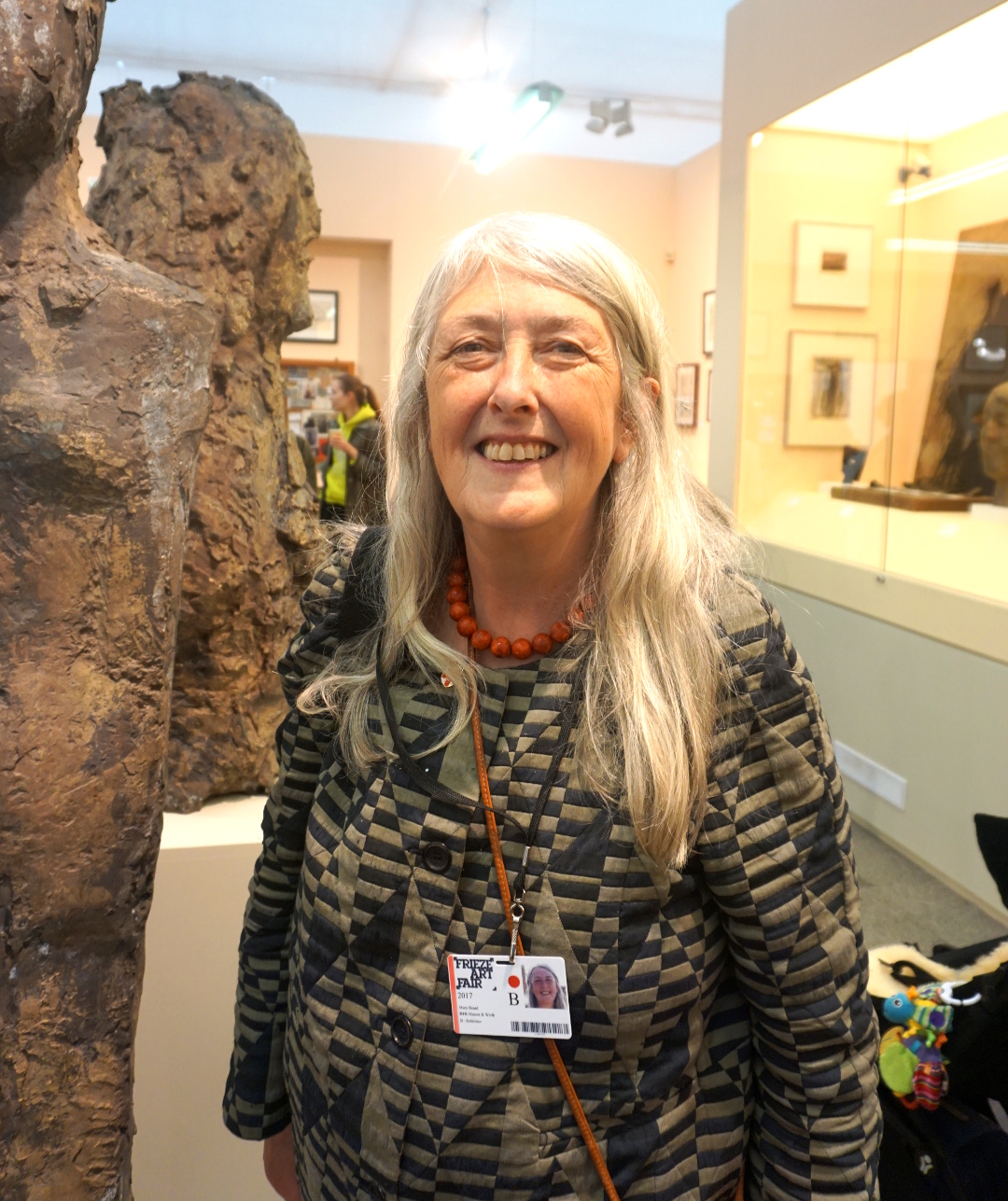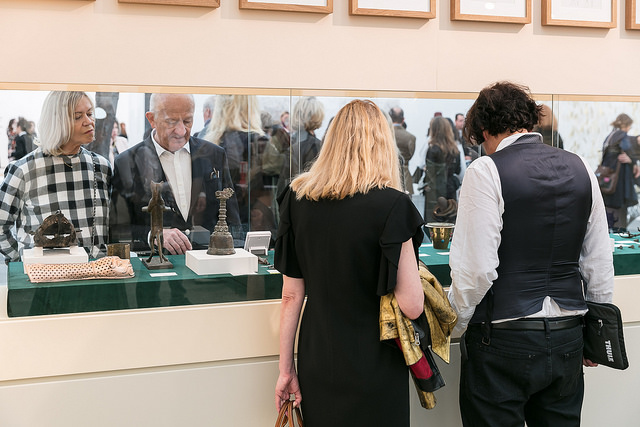
deleteletlethis
The classicist explains how an encounter at an airport led her help stage a bronze exhibition at this year's Frieze
Professor Mary Beard, from Newnham College, Cambridge, is perhaps Britain's best-known classicist, and appears regularly on TV and radio, describing the distant world of ancient Rome in a clear and lively way. So what is she doing at Frieze, an art fair generally dedicated to art works made after 2000?
As she explains in this interview, Professor Beard has been helping Hauser & Wirth build a fake museum within the fair, where contemporary and modern bronzes by such artists as Paul McCarthy and Louise Bourgeois are displayed beside genuine artefacts, as well as less valuable tat purchased from Ebay.
This tricksy technique, Beard explains, not only shows visitors how the ancient world still influences contemporary art, but also shifts the way we look at objects and materials, when the historical periods get jumbled around.

Hauser & Wirth, Frieze London 2017 Photo by Mark Blower. Courtesy of Mark Blower/Frieze
How did your involvement with this exhibition come about? I met Neil Wenman (senior director at Hauser & Wirth) at an airport in New York. We were both flying back to the UK. He came up and said, "I've just been thinking about you. Would you give us a hand with a show that we're doing at Frieze?" I think encounters at airports are always odd; you're liable to say yes or no fairly firmly. I said yes. I was really interested.
Where did you interests lie? I'm interested in display. I wanted to do something light-hearted support, in of local museums, who jolly well need our support, but I was also interested in what happens when you put things from such different origins next to each other – stuff from EBbay next to, say, a Louise Bourgeois. Will that do anything? How do the objects start to talk to each other? I think that works rather well, because, rather than just go into a modern gallery and read the famous names underneath, you start to look at the material in a different way, and you start to think about the tradition in a different way.
Is it easy to tell whether a piece of bronze is new or thousands of years old? No. Bronze is very interesting because it is very hard to date, archeologically. You can't do carbon dating, because there's no organic matter in it. There might be a date stamp if it’s a coin, but generally It's a very fun material, because, in a sense it deconstructs the idea of linear dating.
melottisculptre11
More generally, should we think of contemporary art being 'in dialogue' with the classical world, or is there a big difference between the two? It used to be fashionable to say that modern art had brought about a huge rupture. Some people believed that, what happened in the early 20th century was that the classical world was finally got rid of. Now, I don't know how anybody ever believed that, because its palpably not true, but people did break up plaster casts of ancient sculptures and there was a sense of getting rid of the weight of the classical tradition. Maybe that was a good idea. What people are doing now is using the classical world as something to have a dialogue with. You can't think about how we represent a human form without somehow situating yourself, the classical world, either for it, or against it.
Are there pieces in the display cases here that demonstrate your point? Well, I was looking at this Fausto Melotti sculpture from 1934. It's very beautiful, and, to me, it's shrieking out classical references. You look at it as it is displayed, and, to me, that's the prow of a ship, but if you turned it on its side, it's an ionic column capital.
bronzepotatoes
Is there one other piece in here that has hidden classical meanings? Have a look at the wood and bronze potatoes by Subodh Gupta. It fits precisely with what Roman emperors used to do. If you went to dinner with an emperor, and you were second rank, socially, away from the top table, then one of the favourite tricks the emperors might play on you was to put fake food on your table. It might be metal, or wax. It would be a fantastic display, it would look great, but you couldn't eat any of it. When I saw that, I thought "blimey!" OK, the Romans didn't have potatoes, but it's an example of an object that you represent in a material that undermines its function.
The Frieze Art Fair runs until Sunday. For more on ancient and modern art, from the Bronze Age to the Space Age, get 30,000 Years of Art; for a canny guide to collecting get Collecting Art for Love, Money and More; and for more on the art world from Frieze’s point of view get Frieze A to Z of Contemporary Art.